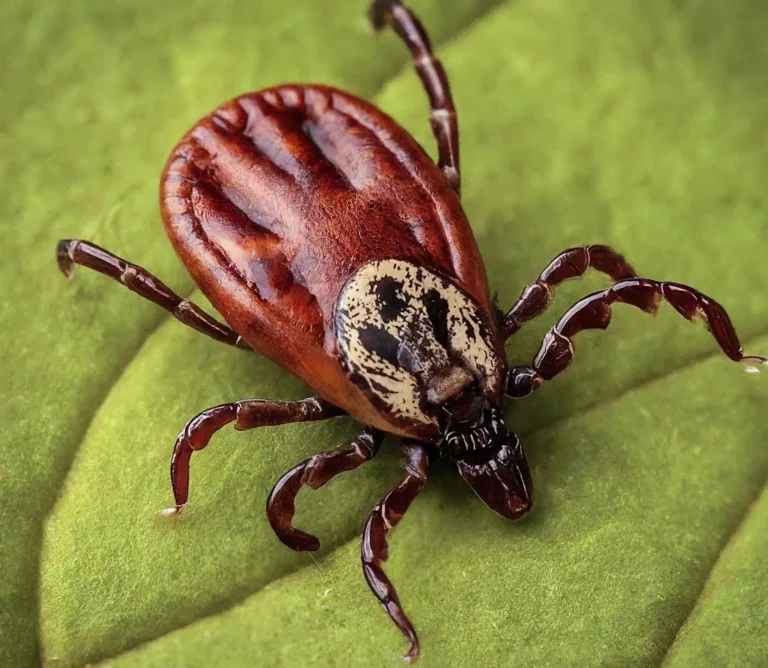Table of Contents
ToggleTicks are tiny creatures with a significant impact on public health. These parasites are capable of transmitting a variety of diseases to humans and animals, making them a major concern for those who spend time in their natural habitats. This comprehensive guide delves into the world of ticks, exploring the diseases they transmit, symptoms to watch for, preventive measures, and the critical role of professional pest control in managing tick populations.
Understanding Ticks and Their Behavior
Ticks are more than just a nuisance; they are vectors for diseases that can have serious health implications. Understanding their lifecycle is crucial for effective prevention and control. Ticks undergo four stages: egg, larva, nymph, and adult, feeding on blood at each active stage. They inhabit wooded, grassy, or brushy areas, waiting for potential hosts, including humans and animals, to pass by.
How Ticks Transmit Diseases: Ticks transmit pathogens that cause disease through the process of feeding. When a tick bites, it can introduce bacteria, viruses, or parasites into the host’s bloodstream, leading to illnesses such as Lyme disease, Rocky Mountain spotted fever, and more.
Common Tick-Borne Diseases
Several diseases can be transmitted by ticks, each with its unique challenges:
- Lyme Disease: Characterized by fever, headache, fatigue, and a distinctive skin rash called erythema migrans. If left untreated, the infection can spread to the joints, heart, and nervous system.
- Rocky Mountain Spotted Fever: Known for its sudden onset of fever, headache, and muscle pain, followed by a distinctive rash. It requires prompt treatment to prevent severe complications.
- Anaplasmosis, Ehrlichiosis, Babesiosis, and Tularemia: Each presents with its own set of symptoms but generally includes fever, chills, and muscle aches. Early detection and treatment are vital to prevent serious outcomes.
Symptoms of Tick-Borne Diseases
The symptoms of tick-borne diseases can vary widely but often start with fever, chills, aches, and sometimes a rash. Recognizing these early signs and seeking medical attention promptly can greatly improve the chances of a full recovery.
When to Seek Medical Attention: If you’ve been bitten by a tick or spend time in tick-infested areas and experience these symptoms, it’s crucial to consult a healthcare provider. Early diagnosis and treatment can prevent the progression of these diseases.
Prevention and Protection
Protecting yourself, your family, and your pets from tick bites is the first line of defense against tick-borne diseases.
- Personal Protective Measures: Wear long sleeves and pants, use insect repellent, and perform regular tick checks after spending time outdoors.
- Environmental Management Techniques: Keep your yard trimmed and free of leaf litter to reduce tick habitats. Consider professional pest control services to manage tick populations effectively.
Diagnosis and Treatment
If you suspect you’ve been bitten by a tick and are experiencing symptoms, seek medical attention. Diagnosis typically involves a review of symptoms and possibly blood tests. Most tick-borne diseases can be treated successfully with antibiotics, especially when caught early.
The Impact of Environment on Tick Populations
Changes in climate and human encroachment into natural habitats have influenced the distribution of ticks and the frequency of tick-borne diseases. Awareness and preventive measures are more important than ever in this changing landscape.
Public Health and Awareness
Educating the public about the risks associated with ticks and the importance of prevention can significantly reduce the incidence of tick-borne diseases. Community efforts, including pest control programs, play a vital role in managing tick populations.
Traveling Safely in Tick-Endemic Areas
When traveling to areas known for tick activity, take precautions to protect yourself. Wear protective clothing, use repellent, and stay on cleared paths whenever possible.
Future Outlook and Research
Ongoing research into tick biology, disease transmission, and prevention strategies offers hope for more effective ways to combat these pests and the diseases they carry.
FAQs
Use fine-tipped tweezers to grasp the tick as close to the skin’s surface as possible, pulling upward with steady, even pressure. After removing the tick, clean the bite area and your hands thoroughly.
Currently, vaccines for tick-borne diseases are limited, with research ongoing to develop more preventive solutions.
Remove the tick promptly, using the same method as you would for a human. Consult your veterinarian for advice on tick prevention for pets.
Yes, most tick-borne diseases can be effectively treated with antibiotics, especially when diagnosed early.
The time varies by disease, but transmission can occur anywhere from a few hours to several days after the tick becomes attached.
If untreated, some tick-borne diseases can lead to serious, long-term health problems. Early treatment is crucial to prevent these outcomes.
Get Professional Tick Help from On Demand
Tick-borne diseases present a significant health risk, but with the right knowledge and precautions, their impact can be mitigated. For those in high-risk areas or situations where exposure to ticks is likely, professional pest control services offer an additional layer of protection. Our team at On Demand Pest Control specializes in strategies that reduce tick populations and protect your family and pets from these dangerous parasites. With services extending across Florida, including Pembroke Pines, Fort Lauderdale, and beyond, we’re here to ensure your environment is safe from ticks and the diseases they carry.
Facing a tick problem or want to take preventive measures? Contact On Demand Pest Control today for a free quote and expert advice on keeping your home tick-free. Let us help you maintain a safe, healthy environment for your family and pets.




